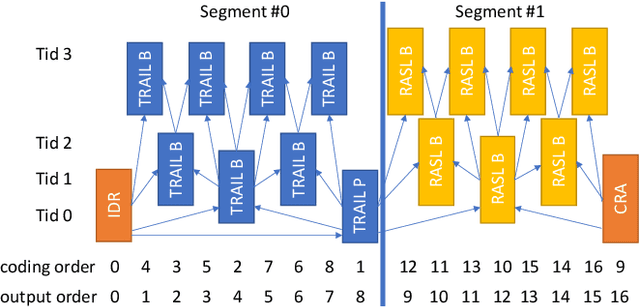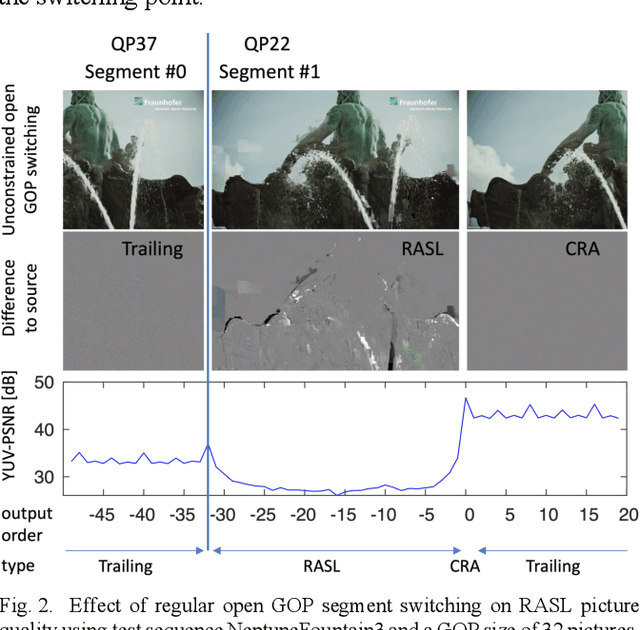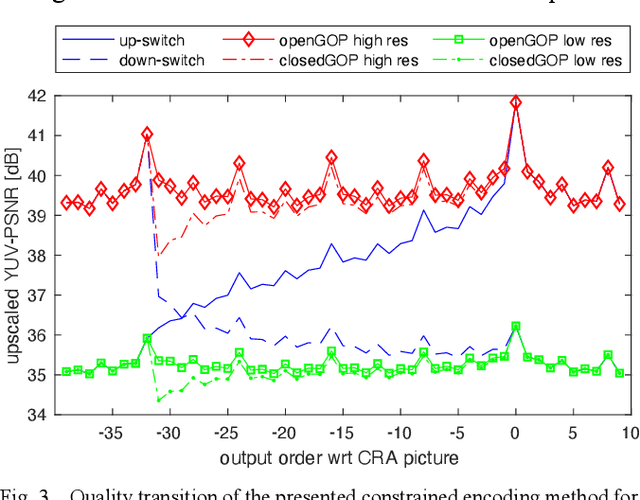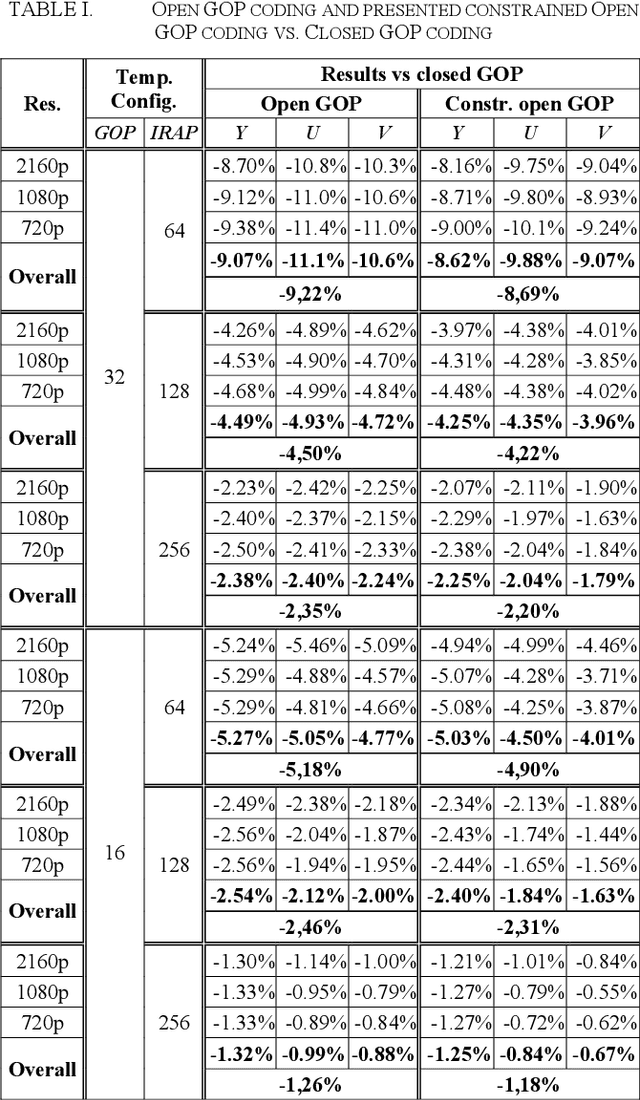Yago Sanchez
Compression of 3D Gaussian Splatting with Optimized Feature Planes and Standard Video Codecs
Jan 06, 2025Abstract:3D Gaussian Splatting is a recognized method for 3D scene representation, known for its high rendering quality and speed. However, its substantial data requirements present challenges for practical applications. In this paper, we introduce an efficient compression technique that significantly reduces storage overhead by using compact representation. We propose a unified architecture that combines point cloud data and feature planes through a progressive tri-plane structure. Our method utilizes 2D feature planes, enabling continuous spatial representation. To further optimize these representations, we incorporate entropy modeling in the frequency domain, specifically designed for standard video codecs. We also propose channel-wise bit allocation to achieve a better trade-off between bitrate consumption and feature plane representation. Consequently, our model effectively leverages spatial correlations within the feature planes to enhance rate-distortion performance using standard, non-differentiable video codecs. Experimental results demonstrate that our method outperforms existing methods in data compactness while maintaining high rendering quality. Our project page is available at https://fraunhoferhhi.github.io/CodecGS
ECRF: Entropy-Constrained Neural Radiance Fields Compression with Frequency Domain Optimization
Nov 23, 2023Abstract:Explicit feature-grid based NeRF models have shown promising results in terms of rendering quality and significant speed-up in training. However, these methods often require a significant amount of data to represent a single scene or object. In this work, we present a compression model that aims to minimize the entropy in the frequency domain in order to effectively reduce the data size. First, we propose using the discrete cosine transform (DCT) on the tensorial radiance fields to compress the feature-grid. This feature-grid is transformed into coefficients, which are then quantized and entropy encoded, following a similar approach to the traditional video coding pipeline. Furthermore, to achieve a higher level of sparsity, we propose using an entropy parameterization technique for the frequency domain, specifically for DCT coefficients of the feature-grid. Since the transformed coefficients are optimized during the training phase, the proposed model does not require any fine-tuning or additional information. Our model only requires a lightweight compression pipeline for encoding and decoding, making it easier to apply volumetric radiance field methods for real-world applications. Experimental results demonstrate that our proposed frequency domain entropy model can achieve superior compression performance across various datasets. The source code will be made publicly available.
Open GOP Resolution Switching in HTTP Adaptive Streaming with VVC
Mar 11, 2021



Abstract:The user experience in adaptive HTTP streaming relies on offering bitrate ladders with suitable operation points for all users and typically involves multiple resolutions. While open GOP coding structures are generally known to provide substantial coding efficiency benefit, their use in HTTP streaming has been precluded through lacking support of reference picture resampling (RPR) in AVC and HEVC. The newly emerging Versatile Video Coding (VVC) standard supports RPR, but only conversational scenarios were primarily investigated during the design of VVC. This paper aims at enabling usage of RPR in HTTP streaming scenarios through analysing the drift potential of VVC coding tools and presenting a constrained encoding method that avoids severe drift artefacts in resolution switching with open GOP coding in VVC. In typical live streaming configurations, the presented method achieves up to -8.7% BD-rate reduction compared to closed GOP coding while in a typical Video on Demand configuration, up to -2.4% BD-rate reduction is reported. The constraints penalty compared to regular open GOP coding is 0.53% BD-rate in the worst case. The presented method will be integrated into the publicly available open source VVC encoder VVenC v0.3.
 Add to Chrome
Add to Chrome Add to Firefox
Add to Firefox Add to Edge
Add to Edge